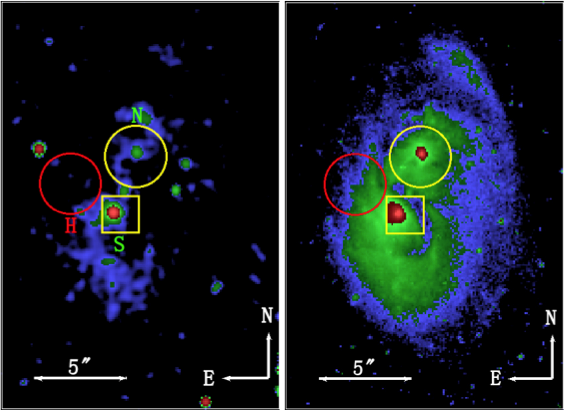You are here
HST and LAMOST discover a dual active galactic nucleus in J0038+4128
In the past years, scientists are searching for the kiloparsec-scale active galactic nuclei (AGN) with continuous efforts because such system can provide important clues to understand the relation between the AGN activity and galaxy evolution. In the hierarchical ΛCDM cosmology, galaxies built up via mergers. Binary supermassive black holes (SMBHs) are natural outcomes of galaxy mergers, since almost all massive galaxies are believed to host a central SMBH. In the gas- rich case, the strong tidal interactions caused by galaxy mergers can trigger the active galactic nucleus (AGN) by sending a large amount of gas to the central regions. A dual AGN could emerge if the two merging SMBHs are both simultaneously accreting gas in a gas-rich major merger. However, up to now, no more than 20 of close dual AGNs (separations between 1 and 10 kpc) are found.
Recently, we report the discovery of a new dual AGN in J0038+4128 with a spatial separation of 4.7 kpc based on the HST images, UV spectra and LAMOST optical spectra. One of them is the Seyfert 1 galaxy with broad emission lines and another one is the Seyfert 2 galaxy with narrow emission lines only. In the HST U-band image, two pairs of bi-symmetric spiral arms are detected in a binary AGN system for the first time. The results are consistent with the numerical simulations of Di Matteo et al. (2005).

